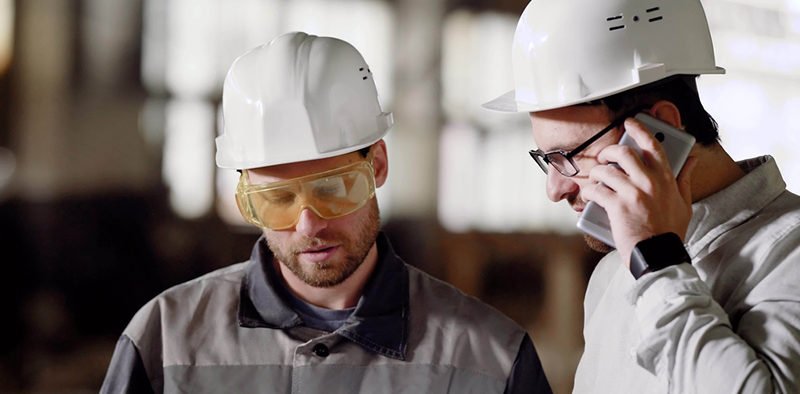

Construction contractors are always looking toward the next job, and with any project, big risks can bring big rewards. As projects proceed, contracts often receive change-orders that will extend the project’s time frame and cost. Determining how to respond to the client’s request is not always an easy decision.
Contractors are not usually looking for reasons to say “no” to clients, since relationships are a key driver of success. Saying “yes” makes for easier and more positive conversations — yes to planned features, yes to suggested timelines, yes to cost estimates and yes to proposed change-orders. After all, contractors stay in business by meeting customers’ expectations, ideally making sure that project goals also align with their own.
But there are times to say no and step back. At some point, it’s critical to finish an ongoing project rather than agreeing to change-order work, especially when a project is approaching completion. In every case, prioritizing the company’s interest is critical when deciding whether to extend its time on a project, or move on.
When to Consider Stepping Back
Timing is a major factor to consider. How far along is the project? If it’s nearing the final phase, accommodating a change-order could be particularly disruptive. Also, contractors must be mindful of closeout issues that will come into play — each with time-consuming requirements. They will include punch lists from multiple parties, such as the owner and architect/designer/engineer. These are not just wish lists; they generally deal with contractually required issues and they must be completed or corrected. A busy punch list may well limit contractors’ ability to take on additional work.
Subcontractors’ time constraints also factor into the decision. Some subcontractors might be dealing with their own obligations that require them to move on to their next job. The bigger the project, the more likely is that extra work could involve significant complications. Timing issues may make agreeing to a change-order impossible.
Bottom-Line Concerns
Any change-order will increase costs — potentially by millions of dollars, depending on the size and scope of the project. Additional equipment, labor and permits all can escalate costs. Financial questions raised by a proposed change-order may include:
- Will the contractor be fully compensated for the change-order costs, and for the time required to execute the additional work?
- Is there a clause in the contract for liquidated damages?
- Does the client agree that the contractor won’t face back-charges, particularly if the expanded scope of the work results in missed deadlines?
- Has the contractor taken adequate steps, per the contract, to be covered from liquidated damages?
The contractor needs to think about potential long-term losses versus short-term gains, especially if there are weaknesses in the contract that might cause problems. Granted, some contractors actually lowball their initial estimates, planning to capture more costs through change-orders. But this can backfire big time, especially if a change-order complicates the final, completion phase of the project.
Legal Issues to Consider
A contract may have a defined timeline in which additional time can be requested. However, it might include pilot programs or other special requirements governing any requests for additional time. Since change-orders invariably affect timelines, it’s important not to underestimate the legal risks of any possible delays.
Liquidated damages against additional time are very hard to prove legally, and contractors should avoid getting trapped into that situation. Of course, “unforeseen conditions” will be defined in the contract. A contractor can’t quit in one of those emergency scenarios, but does need to file for an extension right away, as per the original contract. In the end, it might be possible to negotiate terms of a change-order and arrive at a solution that suits all parties. That’s the ideal scenario.
Handling Change-Orders and When to Say “No”
When considering a change-order, contractors need to evaluate all possible effects on their own operations. These include costs as well as risks to the construction timeline. Miscalculations in these areas can put a contractor out of business. If contractors agree to changes, documents relating to any changes should be filed promptly. In addition to costs and timeline issues, there are other red-flag concerns that may justify saying no to a change-order. They include:
- Failure by the client to respond promptly to requests for information, to review and issue change-orders expediently, or to provide the contractor with all directions needed.
- Design changes that crop up at the last minute, or a cascade of change-orders that indicate indecision about the project’s direction.
- Plans that lack vision, perhaps with disagreements between the owner and the designer. If a contractor’s gut feeling is that the situation has gotten too messy — it probably has.
- If the owner is running behind on payments for work that’s already been done, that’s a major red flag. It’s not smart to commit to more work at that point.
When to Step Back
Contractors need to start all projects with a clear vision of their goal and a detailed plan. Construction projects are complicated, yet many of the complications, an experienced contractor can live with. But there are times when it’s smart to step back.
While hitting deadlines and doing quality work are the best ways to keep customers happy, contractors also have to prioritize their own bottom line. If that is in jeopardy, it might be time to say a respectful “no” and move on to the next project.
Nitin Gulati holds a master’s degree in construction engineering and project management from the University of Texas at Austin and a Master of Science in structural engineering from Michigan State University. For more information, contact littlengine@utexas.edu or call 517-944-4623.
